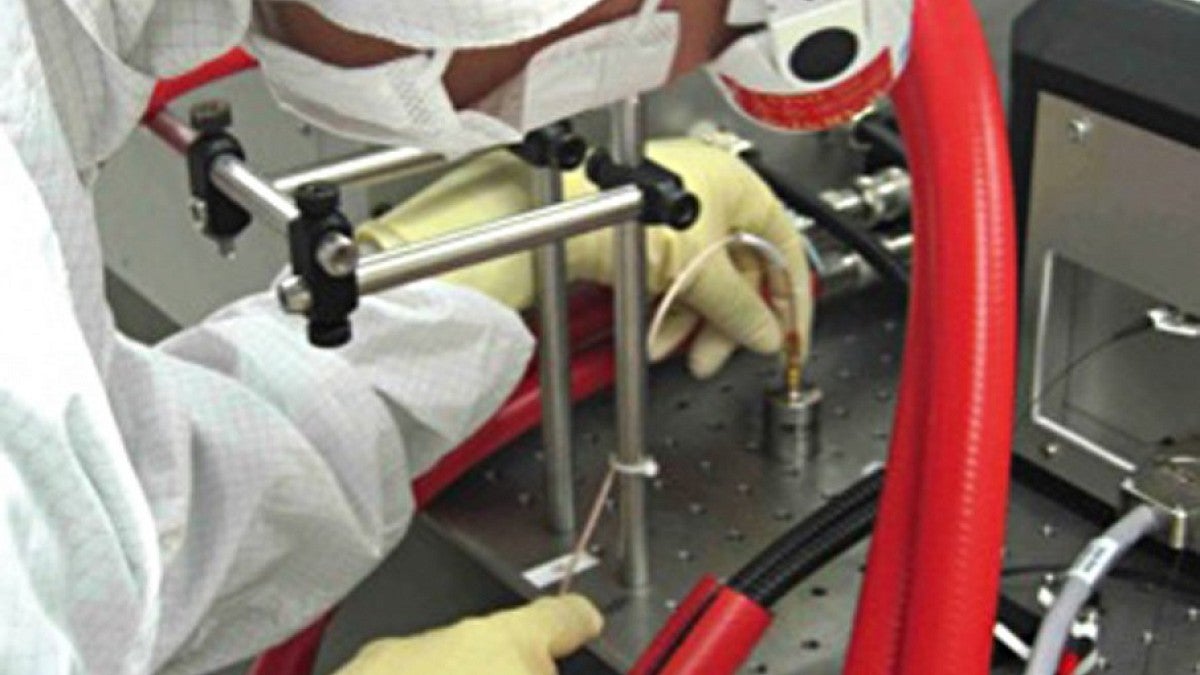UO physicists helped in a major upgrade of the Advanced LIGO Project to aid the search for signals of gravitational waves. The project was officially dedicated May 19 at the LIGO Hanford facility in Richland, Washington.
LIGO is the Laser Interferometer Gravitational-Wave Observatory. The UO was among the founding members of the LIGO Scientific Collaboration when it began in 1997.
When experiments resume, the UO "will be responsible for all the eyes and ears" of the gravitational wave detection process, says Raymond Frey, professor and head of the Department of Physics.
The UO team installed sensors to increase the sensitivity of the instruments by a factor of 10 and provide a 1,000-fold increase in the number of astrophysical candidates for gravitational wave signals.
"It was a festive mood after so many years of effort to reach our new level of sensitivity," said James Brau, a Phillip H. Knight Professor in the UO physics department, about the dedication. "Both of our interferometers — at the LIGO facilities in Hanford and Livingston, Louisiana — are performing well with sensitivities measured at about 60 megaparsecs, or about 200 million light years. That's well beyond the reach of the initial LIGO and on track for reaching 300 megaparsecs in a few years."
The new sensors, Frey said, will enhance the ability to measure ground motion from such things as earthquakes, trucks, wind rocking buildings and ocean waves. They also will capture acoustic noises from airplanes, air motion from heating, ventilating, and air conditioning systems, signals from electrical fields and cosmic rays.
Many of the improvements, Frey noted, were made possible by the work of Robert Schofield, a research assistant professor at the UO who in December was among 125 newly selected fellows of the American Physical Society. The APS cited Schofield "for leadership in identifying and mitigating environmental factors which impact the sensitivity of terrestrial gravitational wave detectors and elimination of spurious noise sources in LIGO."
"Our job was to install the sensors and, moving forward, our role will be to help understand the data and how these phenomena affect gravitational wave measurements," Frey said.
In parallel, he added, the UO group works on data analysis to better understand gamma-ray bursts as being a source of gravitational waves. "This involves understanding the astrophysics of these bursts, how gravitational waves would be generated and developing analytic software to find these signals."
LIGO was designed and is operated by Caltech and the Massachusetts Institute of Technology, with funding from the National Science Foundation. Advanced LIGO is supported by the NSF with helpf from the U.K.'s Science and Technology Facilities Council, Max Planck Society of Germany and Australian Research Council.
Predicted by Albert Einstein in 1916 as a consequence of his general theory of relativity, gravitational waves are ripples in the fabric of space and time produced by violent events in the distant universe — for example, by the collision of two black holes or by the cores of supernova explosions.
The waves are emitted by accelerating masses much in the same way as radio waves are produced by accelerating charges, such as electrons in antennas. As they travel to Earth, the ripples in the space-time fabric bring with them information about their violent origins and about the nature of gravity that cannot be obtained by other astronomical tools.
Although they have not yet been detected directly, the influence of gravitational waves on a binary pulsar system — two neutron stars orbiting each other — has been measured and is in agreement with the predictions.
— By Jim Barlow, Public Affairs Communications


